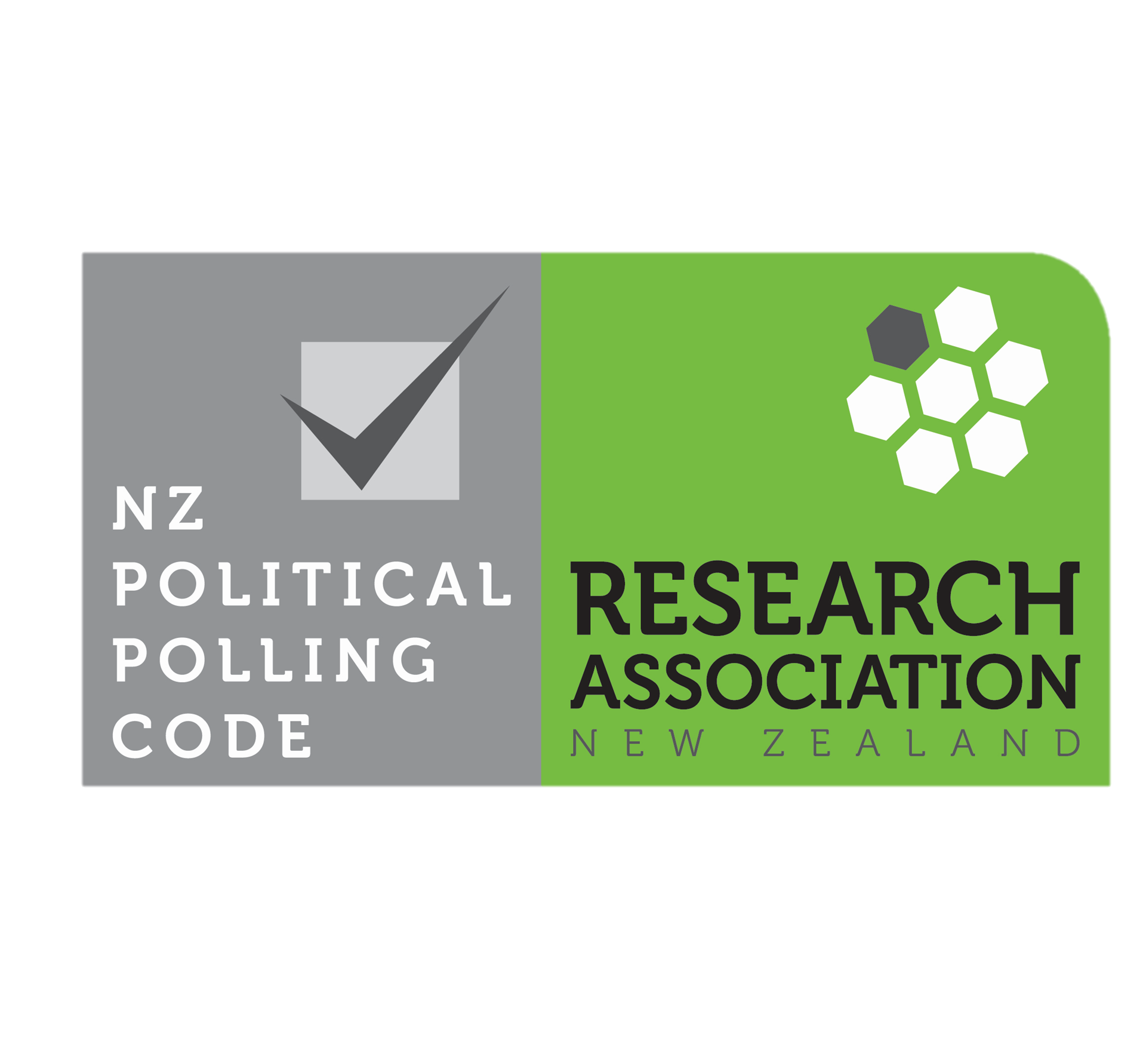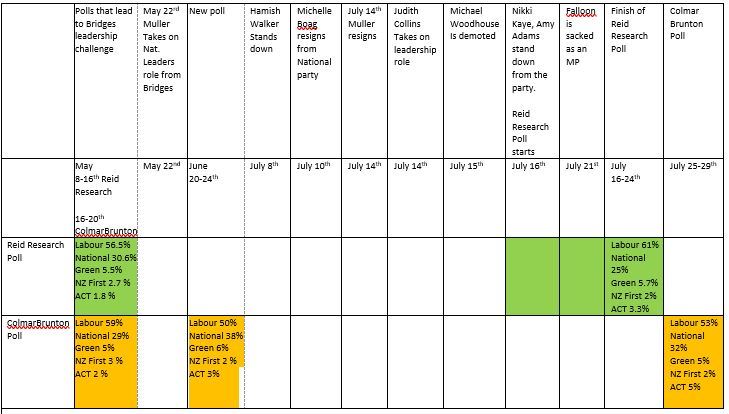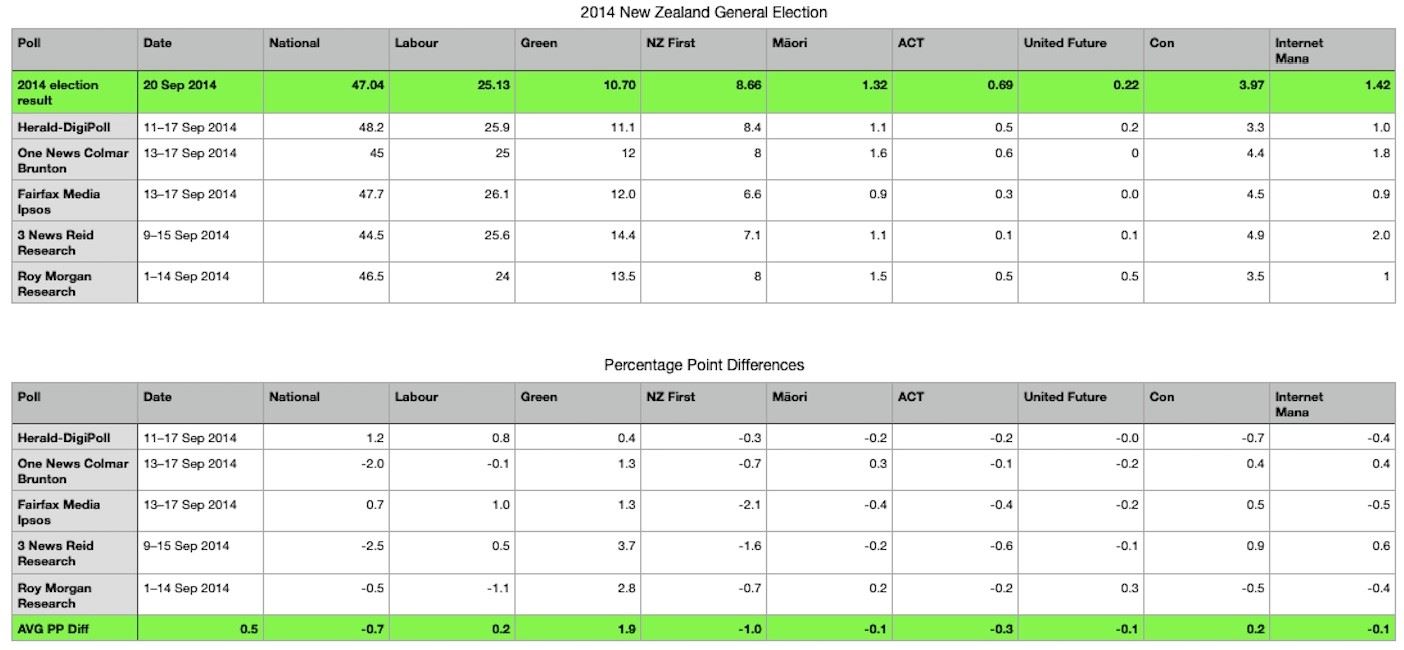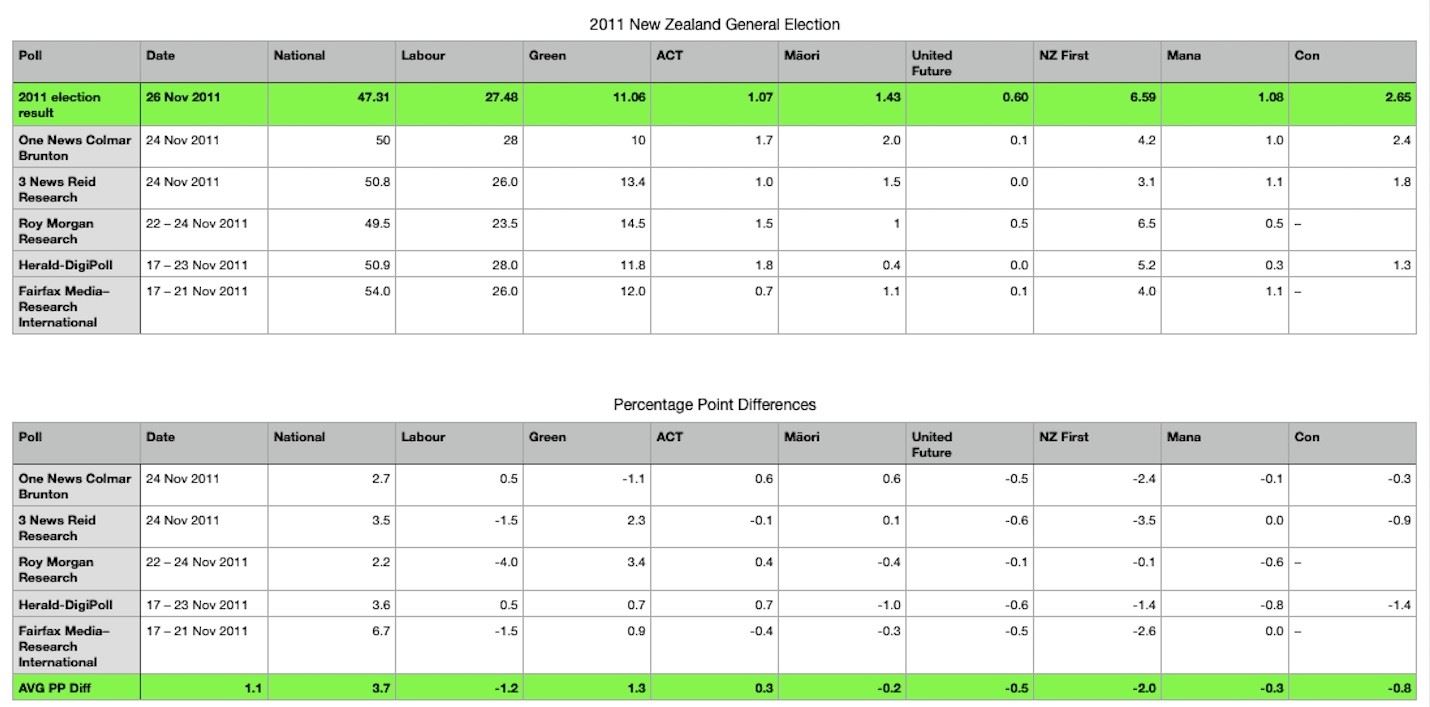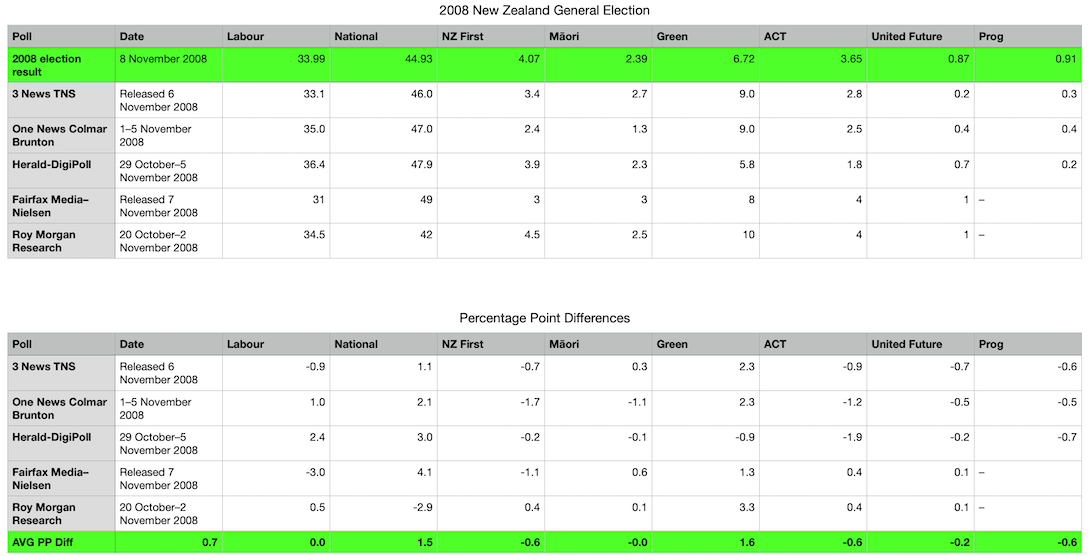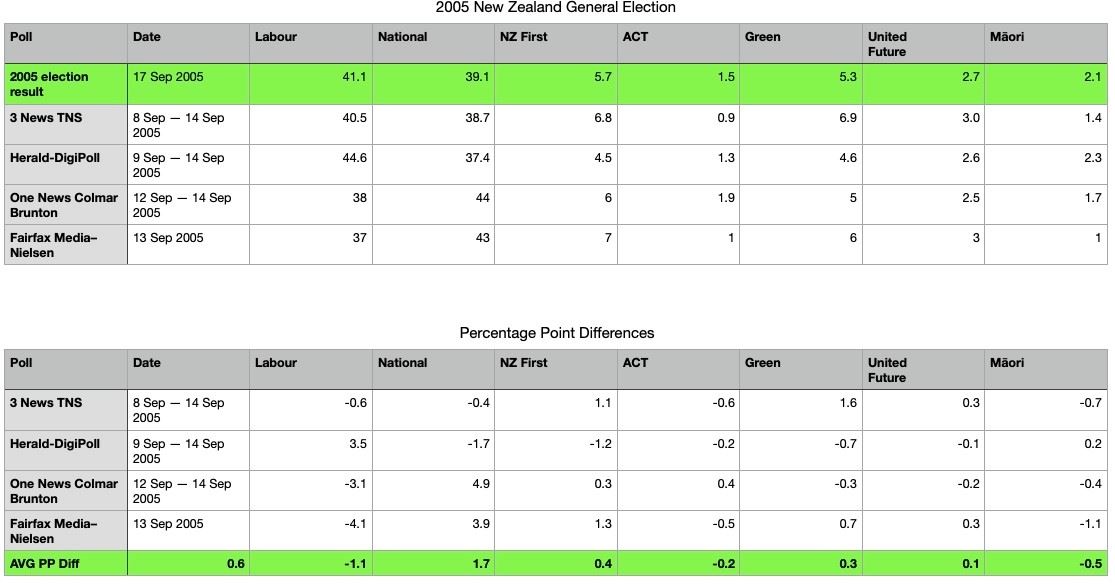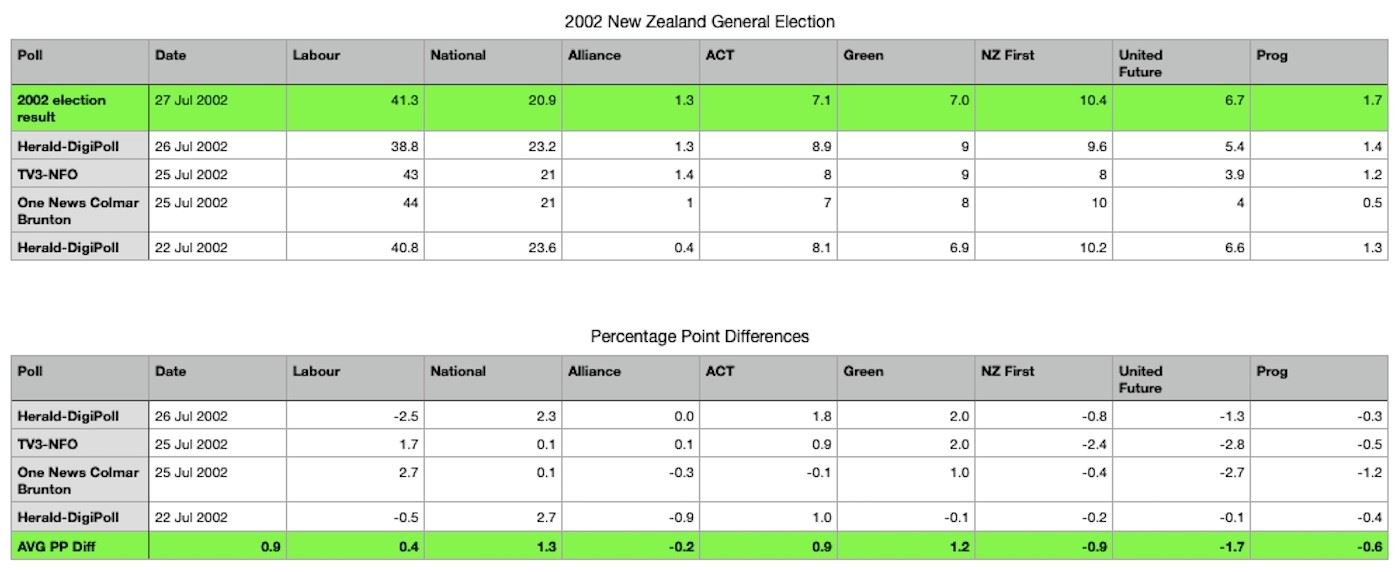Political polling
NOTE: Research Association New Zealand is a professional organisation for people working in the research and insights industry, our members abide by the NZ Political Polling Code.
As we develop insights into current local body elections and prepare for upcoming national elections, the Research Association of New Zealand (RANZ) polling code documents best practice guidelines for the conducting, reporting, and publishing of political polls in New Zealand. Polling is one of the most high profile activities undertaken across the insights industry and therefore can attract a high level of scrutiny. |
What you need to know about how political polling works in NZGO TO INFORMATION ON RNZ WEBSITE Article from 16 September 2025 |
Revised Polling Code 2020The RANZ Political Polling Code provides rules for RANZ member organisations who conduct and report on political polls, plus best practice guidelines for those publishing stories on poll results. The 2020 code review was conducted by a team of polling experts and takes into account technology changes in data collection and reporting methodologies since it was first introduced in 2014. Released 26 June 2020 |
Expert resources for global political polling coverage
In a year with a record amount of elections taking place, political polling is taking centre stage around the world. Despite the informational value polls bring, restricting the publication of opinion polls, particularly in the run-up to political elections, is a popular tactic in many countries.
ESOMAR, the global community for data, research and insights, have rounded up some expert resources to help build and maintain trust in opinion polls.
- ESOMAR and WAPOR Study on The Freedom to Conduct and Publish Opinion Polls: Covering 157 countries across six continents, this comprehensive report is the seventh in the series published since 1984.
- FAQ on Election and Opinion Polls which answers top polling questions for a greater understanding of the process and results.
- Papers, articles, webinars and guidelines from the world’s leading polling experts. Visit the main page.
Prioritising freedom of polling is vital for upholding democratic principles, ensuring government legitimacy, and fostering social stability. It guarantees equal representation, holds leaders accountable, and promotes human rights, ultimately contributing to global peace, progress, and development.
Check out our Freedom of Polling page for the full roundup of resources!
Understanding public opinion polling in New Zealand (May 2023)By Nicole Satherley, Lara M. Greaves and Andrew A. Sporl At the request of RANZ Fellow David Fougere, Murray Campbell, Fellow and RANZ Political Polling Spokesperson, and Geoff Lowe, RANZ Chair, were invited to provide feedback on this academic paper offering a guide to understanding and reporting on public opinion polling in New Zealand. The paper references documents already available on the RANZ website, including the RANZ Political Polling Code 2020, and its message is endorsed by RANZ. Abstract Public opinion polling provides a platform to elucidate the public’s attitudes towards and support for various issues, and allows politicians to learn of and respond to these attitudes. However, a low level of understanding about how polls work, and a lack of communication and transparency about the methods used for a poll, can impede this function. Although ample resources on the topic of public opinion polling have been produced across international organizations, these can be difficult to navigate and piece together for a lay-audience. They also cannot provide information on political polling as it relates to specific contexts, such as New Zealand’s unique mixed member proportional electoral system. Here, we provide a guide to understanding and reporting on public opinion polling in New Zealand. The guide covers key information on how polls work, aspects of polls that speak to their quality, including sample size, error, and sampling methods, and how political polling relates to actual party representation in New Zealand parliament. By identifying and explaining key aspects of public opinion polling, and why they matter, we hope this guide facilitates improved poll transparency and standards of reporting among journalists and media, and overall understanding of poll results by poll consumers.
|
The 2020 Election Results in ReviewIn the year of COVID 19, the 2020 election was certainly one of the most drawn out and challenging to follow and predict for all stakeholders, including journalists, pundits and pollsters. All the polls had forecast a clear majority for Labour; the question was whether Labour could govern alone or in partnership with the Greens. As shown below, the two media polls by ColmarBrunton and Reid Research conducted in the last week leading up to election day were remarkably similar, and close to the share of votes for the Greens, and ACT. Both polling companies also predicted correctly that NZ First (and other minor parties) would fall short of the 5% threshold.
But the fortunes of Labour and National were not so easily foretold. ColmarBrunton’s and Reid Research’s last polls in the days immediately before October 17th predicted near identical results for Labour (46%) and National (31%). In reality there was a greater gap between the two main parties. The shared systemic underestimation of the gap between the two main parties’ level of support has, to a large extent, been attributed to the very high number of early voters. In the lead up to this election almost 2 million people had voted prior to October 17th versus 690,000 on election day. In the previous two elections early voting was not the norm (1.24 million in 2017 and only 717, 600 in 2014). As noted by the Newsroom on October 18th the National Party's pollster, David Farrar, tweeted on Saturday night that Labour's party vote from advance voting was 51 percent and from the election day was closer to 44 percent (figures confirmed by post-election analysis run by Stuff https://interactives.stuff.co.nz/2020/10/election-2020-results-analysis-labour-day/). National, on the other hand, was 26 percent from advance votes and 30 on election day. So, the anticipated late swing in voter support away from the incumbent to the opposing parties may have occurred in the last week but its affect was heavily discounted by the high proportion of early voters who supported Labour. By the time those last pre-election polls were in field, a significant number of respondents had already voted. Asking them who they would vote for may not be the same as asking who they did vote for. That might explain the difference between the final polls and the election night results. All pollsters may need to ensure, for future elections, they can calibrate their questions and analysis to take into account the significant impact of extensive early voting on their final election night predictions. Murray Campbell, RANZ Fellow and Polling spokesperson, October 2020. |
ESOMAR: FAQs for Opinion and Election PollsWhy do people conduct polls? Why do election polls get it wrong sometimes? Should all polls be vetted by the government? |
Rogue results or Rogue events?The lead up to any election is always characterised by unscripted moments, own goals and the occasional red card. The 2020 election season has been particularly dramatic, especially for the National Party. The ever-changing political landscape making it hard for the voting public and the pollsters to keep up with what’s coming next. As shown below in the timeline, in mid to late May, the two public polls ColmarBrunton and Reid Research recorded very similar results for the Simon Bridge’s National Party (29% and 30.6%), which culminated in a leadership challenge and led to Todd Muller taking over as National Party leader. The next ColmarBrunton poll in 20th-24th June recorded a solid recovery for National, up 9 points to 38%. But the period from July 8th to July 21st was an especially turbulent period for the National Party, involving the resignation of a leader, the standing down of an ex Party President and a junior MP, the appointment of a new leader Collins, and then another series of stand downs, demotions and sackings. Reid Research started polling on the 16th, just as the centre of this turbulence was passing over the National Party. Given these events it’s perhaps not surprising that National polled lower than the pre-Bridges leadership change (25% vs 30.6%). Note that this result was still higher than its worst election night result of 22% (2002). The CBR poll started 9 days after the Reid Research poll, with relatively clean air. Even so, National’s result with Collins as leader at 32% is only 3 points higher than National’s vote when Bridges was toppled (29%). Collins has to consider as possibilities that she hasn’t made much difference from Bridges' low point and is doing worse than Muller (6 points) or acknowledge that she has brought the party forward from the abyss of the events between July 8th and July 21st. The latter supports the notion that the Reid Research poll was an accurate and fair measure of support for a party dealing with a perfect storm of rogue waves between July 8th and the 21st. |
NZ Electoral Polling Results 2002-2023Results of polls for the last six elections can be found in the tables below. Please note:
|
|
|
|
|
|
|
Historical Polling BlogsHistorical polling statistics can be found on the Kiwiblog website HERE Blogs by Gavin White (UMR) analysing polling data and the 2014 election results: https://web.archive.org/web/20180123134042/http:/sayit.co.nz/blog/its-crunch-time https://web.archive.org/web/20171115092908/http:/sayit.co.nz/blog/what-political-polls-tell-us | 'Understanding and Interpreting Polls' - a free AAPOR/ESOMAR/WAPOR course for journalists Download information here RANZ Polling Statement June 2019Following the release of two conflicting polls in June, the Research Association NZ statement can be downloaded HERE. |
Other resources
'Understanding and Interpreting Polls' - a free AAPOR/ESOMAR/WAPOR course for journalists Download information here
British Polling Council - an association of polling organisations that publish polls.
For the latest PRIVACY NEWS
Priv-O-Matic - a tool to help business owners create privacy statements - More information

